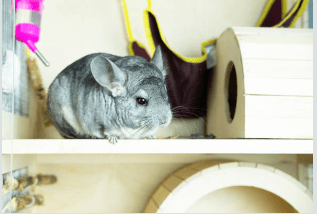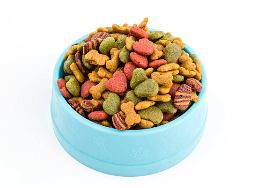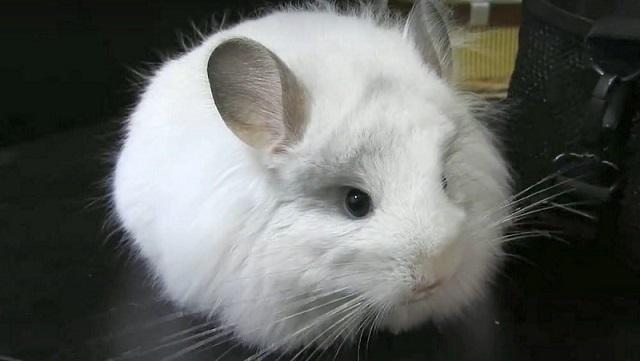Ready to unravel the captivating world of the royal Persian angora chinchilla?
Angora Chinchillas have a soft nature to them and they drape our hearts with their gentle beauty.
As a reptile expert, I’ve been touched by their gentleness and am here to guide you through everything there is to know about these amazing creatures!
Let’s dive in!
Table of Contents
What is Angora Chinchilla?
A hint of mystery. A dash of elegance. The angora chinchilla is more than just a furry creature. It’s a breathtaking blend of history and luxury. But wait, there’s more than just fur-deep beauty to this critter.
What Makes Angora Chinchillas Unique?
Beyond their splendid appearance, their personality shines. Each has its own charm, creating an irresistible allure for owners. It’s not just about the coat, it’s about the heart beneath.
Characteristics and Appearance of Angora Chinchillas
Imagine the softest cloud. Now, turn that into a creature. The angora chinchilla showcases long, dense fur that exudes luxury. Their elegant demeanor and shimmering fur are a sight to behold.
History and Origin of Angora Chinchilla Breed
Originating from the chilly Andes, these creatures have an illustrious history. Admired for their plush coats, they became the elite’s favorite. Today, they are the epitome of luxury and charm.
Caring for Angora Chinchillas
Caring for Angora Chinchillas, with their luxurious coats and gentle personalities, requires a delicate blend of love, patience, and knowledge. Let’s delve deeper into what it takes to ensure these lovely creatures are healthy and happy.
Creating a Suitable Habitat for Angora Chinchillas
The foundation for a happy chinchilla begins with its habitat. Ensure their surroundings mimic their natural environment while offering the comfort and safety they deserve.
Cage Setup And Environmental Considerations
Size matters. A spacious cage, ideally 3x2x2 feet, is ideal for these active climbers. Wire cages are preferred, ensuring ample ventilation. Avoid plastic as chinchillas tend to chew on them.
The temperature should be cool, between 60-70°F, as these fluff balls are sensitive to heat. Additionally, maintain low humidity levels to prevent fur fungus.
Providing Hiding Spots and Cozy Nesting Areas
Angora Chinchillas are naturally shy and enjoy their downtime. Incorporate hideaways like wooden houses or hammocks. Nesting areas with soft hay are also a hit, allowing them a cozy retreat after an active day.

Grooming and Coat Maintenance
Maintaining their royal coat requires attention to detail.
The Unique Grooming Needs of Angora Chinchillas
Unlike other pets, angora chinchillas prefer dust baths to keep their coat clean. Providing a bath 2-3 times a week with chinchilla-specific dust ensures their fur remains plush.
Avoid water baths unless absolutely necessary, as moisture can damage their fur.
Brushing and Maintaining the Long and Soft Fur
Gentle brushes specifically designed for chinchillas can prevent tangling. Remember to brush gently to avoid pulling their delicate fur.
Regular brushing sessions also strengthen your bond with your pet.
Preventing and Managing Fur Matting
Long fur can sometimes mat. Prevent this by regular checks, especially in areas prone to matting like underarms. If you notice a mat, delicately untangle it, ensuring no harm to the skin beneath.
Nutritional Considerations for Healthy Coats
The right diet ensures their coats remain soft and their health optimal.
Appropriate Diet and Nutritional Requirements
A diet high in fiber is paramount. Timothy hay should be the primary food source, supplemented by chinchilla-specific pellets. Fresh vegetables can be offered occasionally, but avoid fruits due to their high sugar content.

Ensuring Sufficient Hydration and Fiber Intake
Freshwater, replaced daily, ensures they remain hydrated. Their high-fiber diet, primarily from hay, promotes digestion and overall health.
Supplements for Coat Health and Shine
While a balanced diet generally provides all needed nutrients, occasionally, Omega-3 or Vitamin-E supplements can be given for that extra coat shine. Always consult a vet before introducing supplements.
Showcasing the Softness of Angora Chinchilla Coats
What’s behind this legendary softness? Let’s unravel the threads of the angora chinchilla coat’s exquisite beauty. It’s a tale worth weaving.
The Luxurious Texture of Angora Chinchilla Fur
Angora Chinchilla fur is the epitome of opulence in the animal kingdom. Each strand is exceptionally fine, almost silk-like, making the coat dense yet incredibly soft.
The interplay of these hairs results in a texture that’s plush to the touch, often described as feeling like a soft cloud. This unique texture doesn’t just offer beauty but also insulates the chinchilla, keeping them warm in cold climates and vice versa.
The Process of Collecting and Harvesting Angora Fiber
Harvesting the prized Angora fiber requires precision and care. Typically, the fur is gently combed or plucked, not shorn, during the chinchilla’s natural shedding period.
This ensures that only the mature fibers are collected, leaving the undercoat intact. This method not only produces the highest quality fiber but also ensures the animal’s comfort and well-being.
Ethical Practices in Angora Fiber Production
As the demand for Angora fur has grown, so has the importance of ethical harvesting. Ensuring the chinchilla’s welfare should be the priority. Reputable producers prioritize the health and happiness of the chinchillas, providing them with spacious environments, proper nutrition, and gentle handling.
Consumers need to support such practices, seeking certifications or guarantees that the fur products they buy are sourced without causing harm or distress to these lovely creatures.
Angora Chinchilla Breeding and Genetics
Nature’s magic and human intervention craft the Angora chinchilla’s marvel. Dive into the meticulous world of breeding, where genes meet gentle care.
Breeding Practices for Maintaining Soft and Luxurious Coats
To preserve the luxurious coat synonymous with Angora Chinchillas, breeders meticulously select pairs based on their fur quality, ensuring that offspring inherit the prized softness and density.
Genetic Considerations
Genetics isn’t just about fur. It’s crucial to understand the lineage to prevent inbreeding, which can lead to health issues. A keen understanding of dominant and recessive genes helps in predicting the characteristics of the offspring.
Challenges in Breeding Angora Chinchillas
Breeding these creatures isn’t without hurdles. Finding the right pairing, ensuring healthy pregnancies, and managing genetic diversity requires expertise. There’s also the challenge of maintaining the signature fur quality across generations.
Responsible Breeding and Ethical Standards
Above all, responsible breeding emphasizes the welfare of the chinchillas. Ethical breeders provide proper care, spacious habitats, and regular veterinary checks. This commitment ensures that every Angora Chinchilla born is not just a product of superior genetics but also a testament to love and care.
Angora Chinchillas as Companions
Beyond the luxurious fur, lies a heart yearning for companionship. Let’s explore the world of bonding with these gentle souls.
Temperament and Personality Traits of Angora Chinchillas
These gentle creatures possess a temperament that’s often described as:
- Curious: Always eager to explore their surroundings.
- Playful: They relish interactive toys and games.
- Nocturnal: Most active during dusk and dawn.
- Shy yet Affectionate: While they might take time to warm up, they eventually form strong bonds with their caregivers.
While inherently calm, their environment and upbringing can influence their behavior. Positive early interactions with humans can make them more friendly and trusting.
Bonding and Interacting with Angora Chinchillas
Building a bond with Angora Chinchilla is a rewarding experience. Some steps to enhance this relationship include:
- Regular Interaction: Spend quality time, be it playing or just sitting together
- Gentle Handling: Always handle them with care, avoiding sudden movements
- Voice Modulation: Speak in a calm, soothing tone to build trust
Remember, patience is key. Over time, they recognize and get attached to their human companions.
Providing Enrichment and Mental Stimulation
A stimulated chinchilla is a happy chinchilla. To keep their minds and bodies engaged:
- Toys: Offer a variety of toys, from wooden chews to climbing structures.
- Rotating Environment: Change the setup of their habitat periodically to pique their curiosity.
- Treat-Seeking Activities: Hide treats in toys or around their habitat, encouraging them to ‘hunt’.
- Interaction: Play gentle games or train them with positive reinforcement techniques.
Conclusion
The royal Persian angora chinchilla is not just a pet; it’s a life experience. From their luxurious coat to their heartwarming personality, they’re an ode to nature’s beauty. Cherish them, care for them, and in return, they’ll drape your world in softness. Are you ready to embrace this gentle beauty?
FAQs
What makes the fur of Angora Chinchillas so unique?
Angora Chinchilla fur is renowned for its ultra-fine, dense texture, which gives it an exceptionally soft and plush feel, often likened to a cloud.
How often do Angora Chinchillas need grooming?
While Angora Chinchillas use dust baths 2-3 times a week for self-grooming, they benefit from gentle brushing sessions once a week to maintain their coat’s luxuriousness and prevent matting.
Is it ethical to use products made from Angora Chinchilla fur?
The ethicality largely depends on the harvesting practices; supporting producers who prioritize the well-being and humane treatment of chinchillas ensures that products are sourced responsibly.
Alina Hartley is a small-town girl with a ginormous love of bearded dragons. It all started with Winchester, a baby bearded who was abandoned at the shelter by his former owners because of a birth defect that caused one front leg to be shorter than the other. Alina originally went to the shelter looking for a guinea pig, but one look at Winchester and it was love at first sight. From that day on, Alina has dedicated her life to learning everything she can about bearded dragons. She loves helping new beardie parents start their incredible journey with these magnificent reptiles.
Follow her on:
LINKEDIN
TWITTER.
Read her latest articles HERE
Learn more about her HERE.

